So I’m reading somewhere that the Pearl District in Portland has been named the 5th Hippest Neighborhood in America by Forbes Magazine. And OK… we’ve all been regaled with Steve Forbes’ stories about how He & Kurt ‘n’ Courtney used to hang out Back in The Day,  so we know that Forbes Magazine is the Final Arbiter of Hip, but let’s look at this a little more closely…
so we know that Forbes Magazine is the Final Arbiter of Hip, but let’s look at this a little more closely…
Now, while I do not profess to be an expert on the perennial question of “What is Hip?“, by my reckoning, the Pearl District doesn’t even seem to me to be the second hippest neighborhood in Portland! For example, both the Hawthorne/Tabor/Sunnyside and the Alberta Arts Districts strike me as having much more vibrant arts and club scenes but, of course, that could be just because artists and scenesters can afford to live there. I’m sure the Pearl District just has a Service Entrance somewhere…
Let’s see what the Forbes article has to say about the Pearl District:
Portland, Oregon’s Pearl District, which has been undergoing urban renewal since the 2000s, [and is] currently hosting MTV’s latest edition of “The Real World,” is No. 5 on our list thanks to its intense caffeination (it has the second-highest concentration of coffee shops of neighborhoods on our list)…
…
If you exclude Starbucks, I believe it drops to 8th…
[As] gentrification progresses, some hipsters are fleeing the rising costs of new high-rise condos and warehouse-to-loft conversions for the less established (and less pricey) Mississippi Ave and the Alberta Arts District neighborhoods. (Probably the MTV reality show doesn’t help either.)
There goes the neighborhood. Anyway… Let’s take a look at the methodology:
While what exactly qualifies someone as a hipster may be up for debate, to compile our list, we took a quantitative approach to determining the 20 places in which hipsterdom is most likely to flourish…
A “quantitative approach?” Do go on…
The San Francisco-based startup Nextdoor.com helped us dig through data on more than 250 neighborhoods in the biggest U.S. cities… [We] factored in Nextdoor’s Neighborhood “Hipness” Index, which is based on how often words associated with hipness (for example art, gallery…

designer, musician) appeared on each Nextdoor neighborhood’s site pages
And who IS this Nextdoor.com?
What can you do with Nextdoor?
It’s the easiest way for you and your neighbors to bring back a sense of community to your neighborhood.
Safety seemed to be a recurring motif. One bullet point was the following:

Of course safety doesn’t seem to be a problem in the Pearl District. For one thing, I’m not sure I’ve ever seen any of its inhabitants actually walking on the sidewalks. And the only individuals I’ve actually witnessed entering or leaving any buildings other than to enter a commercial establishment, is via one of the many garage doors that seem to populate the district– five of which could be viewed from just one street corner.
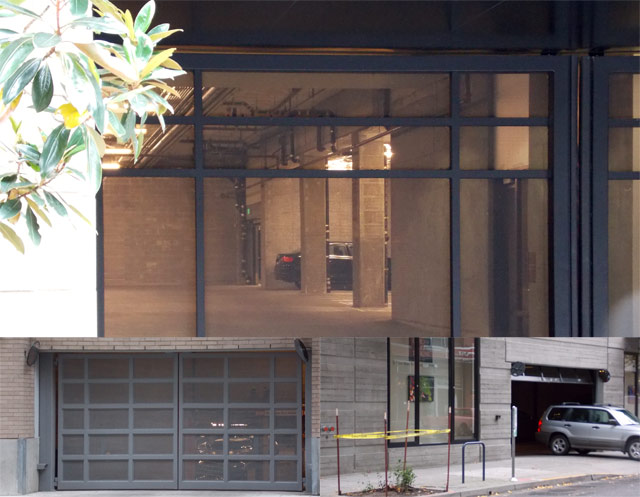
Bottom Right: A Pearl District resident evacuates without securing an armed escort.
I don’t mean to give the impression that it’s all bad. I think the best examples of this program of Urban Renewal is in the re-purposing of old industrial buildings…
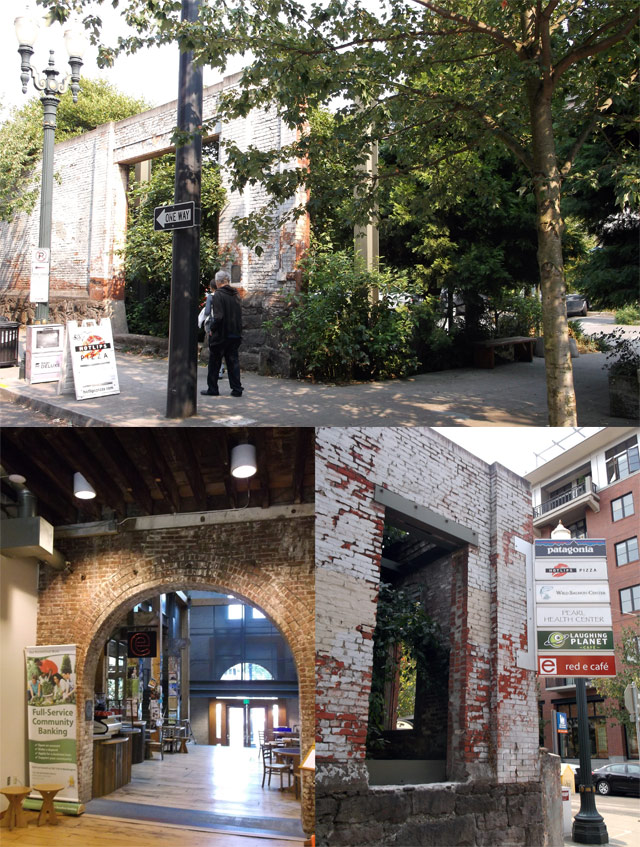
Like this converted armory:
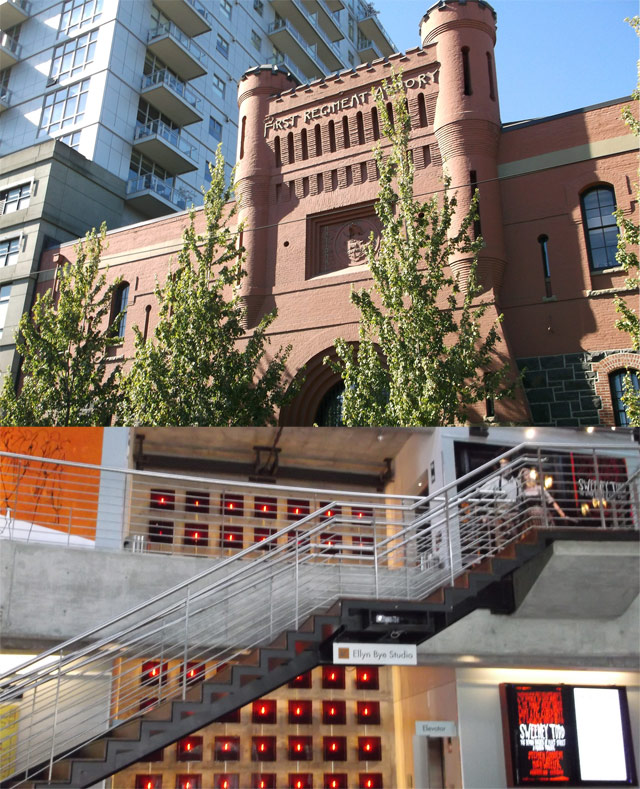
…which has enjoyed a much happier fate as an Arts Center than, say… the San Francisco Armory, which was finally leased by a film studio, specializing in… rough-trade “adult” films…
One possible definition of “hipness” (I was unable to locate Nextdoor.com’s “Hipness” index using a cursory Google search. Sorry…) is “forward thinking” (from avant garde, French for “advance guard), which would presumably include access to Public Transportation, which Portland has. The Pearl District is served by a streetcar line, which recently opened a loop serving NW Portland (another up and coming trend-setter neighborhood). One unsettling facet of this otherwise fine example of Urban Transport is the fact that all the stops in “The Pearl” seemed to have commercial sponsors, which are announced over the intercom at each stop. This corner…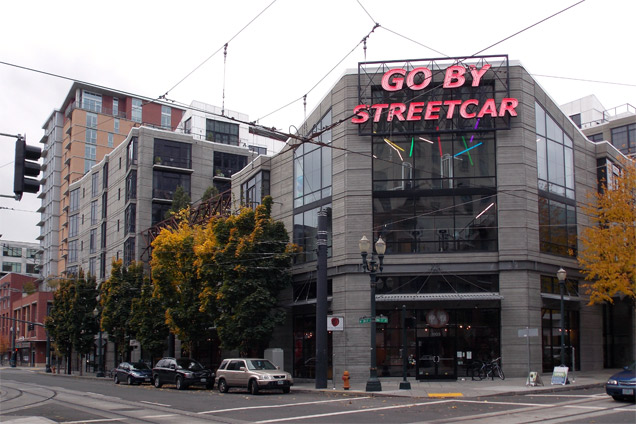
…is sponsored by HOYT Pearl District Real Estate (for example). Seems there’s a lot of Real Estate marketing going on.
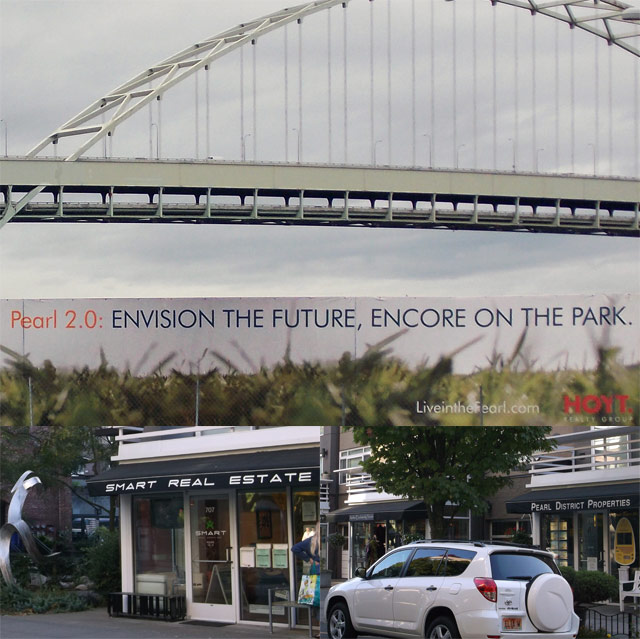
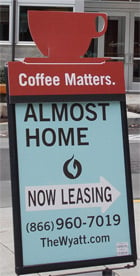
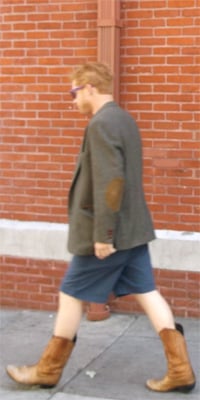
So, what sort of people will we find in The Pearl? It’s kind of hard to tell. Strangely enough for a residential district, the sidewalks seem to roll up after 6 p.m. And although its reputation is that of a hip place to live I don’t see many artists’ studios, and even Portland hipsters (I saw only one fitting that description in three photo expeditions there, pictured at right) didn’t seem to venture there. And, as I mentioned before, the only people I saw moving in or out of buildings seemed to be entering or exiting in vehicles through automatic garage doors.
Those (presumed) inhabitants I did see struck me as the offspring of some unholy miscegenation between yuppies and hipsters, which I dubbed yupsters— a name which I subsequently discovered to be hardly original (great minds thinking alike, or something…).
For the budding yupster, a job at Yankelovich means plane tickets to Coachella and no more worries about getting that root canal.
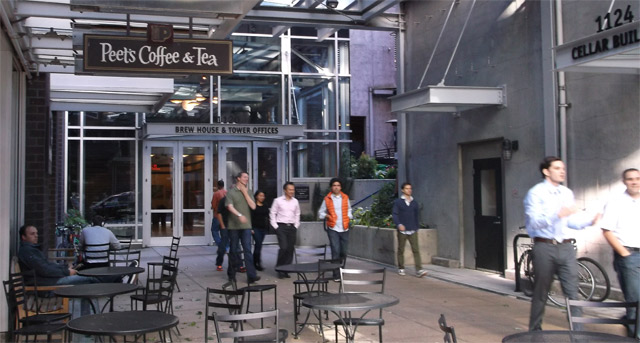
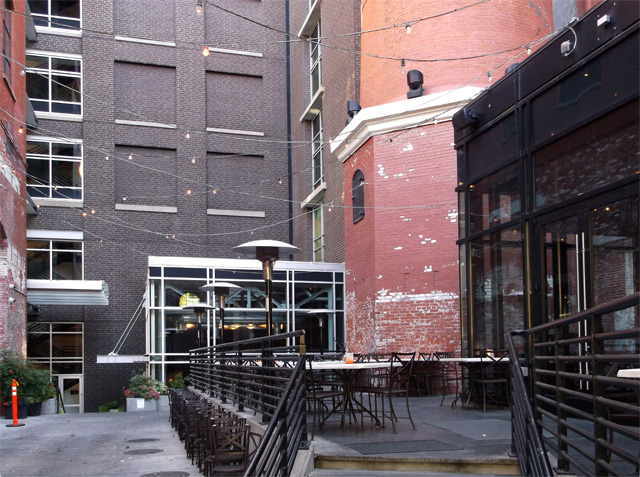
Above: Two views of the historic Blitz-Weinhard Brewery, converted to office and commercial spaces.
In the best cases, residences consisted of converted industrial buildings, real or imagined. Not sure which this one is:
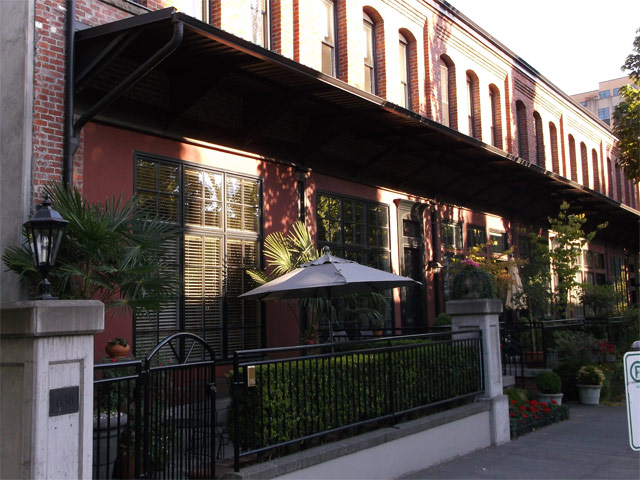
But the worst case scenario usually involved blocks and blocks of identical pre-fab “contemporary” apartment buildings…
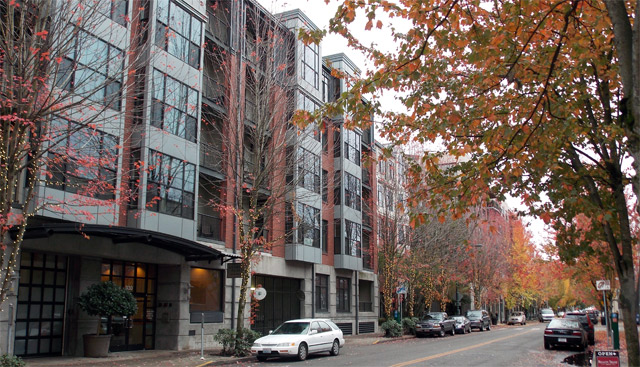
This eminently fashionable District features the sort of trendy, upscale chain stores one might expect to find in any similarly fashionable Districts elsewhere in the United States

I guess the long ‘n’ short of it is this: How can the Pearl District be one of the five hippest neighborhoods in the Country when it’s not even the second hippest neighborhood in the City of Portland? A lot has been made of the relative trendiness of Portland in the National Press, but the fact remains that the best thing about Portland is just…
..it’s just a very pleasant place to live! And, although I am not really a pet person myself, I’ve often noticed that the most livable places tend to be the most pet-friendly. And I’m not really sure that “The Pearl” really fits this description:

Poetry…




 so we know that Forbes Magazine is the Final Arbiter of Hip, but let’s look at this a little more closely…
so we know that Forbes Magazine is the Final Arbiter of Hip, but let’s look at this a little more closely…














